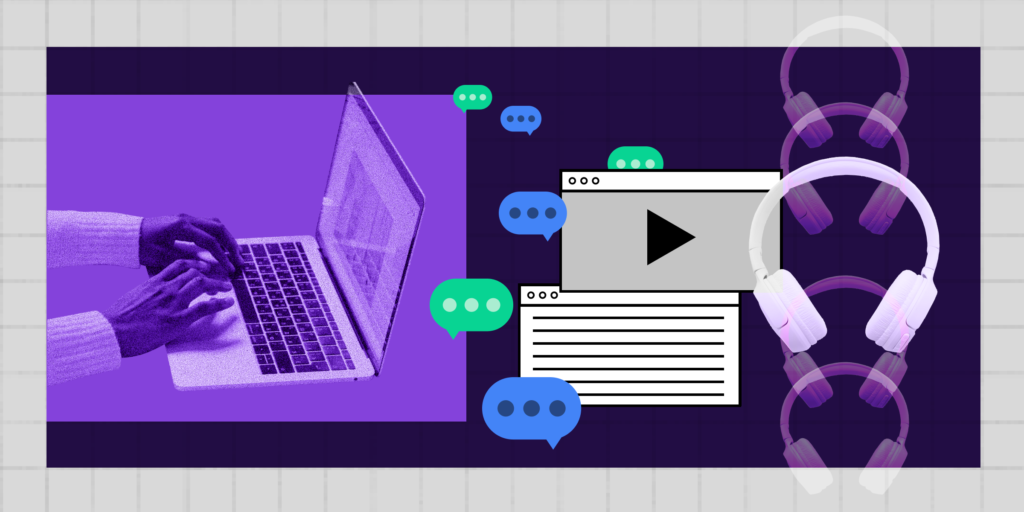As higher ed treads through unforeseen waters, understanding your students’ needs and adapting your course delivery, assessments and grading accordingly can go a long way. Continuous reminders of your presence can indicate that you’re available to walk on this uncharted path with your students—to provide them with guidance amongst great uncertainty.
At Top Hat’s 2020 user conference, we spoke to professors on what empathetic teaching means to them. Among their responses: making the classroom an inviting place for students, using technology to help students who were previously reluctant to participate and fostering peer-to-peer (and peer-to-instructor) connections to make the course material meaningful.
With the widespread cancellation of in-person classes, professors have had to pivot their course delivery and assignments with little-to-no notice. In today’s education landscape, and especially in this school year, empathetic teaching is no longer a nice-to-have: it’s vital for student success. Here are professors’ refreshed perspectives on the need to model empathy in the classroom.
Accomodation via compassion
On top of juggling personal, family and job-related responsibilities, students are now expected to navigate through a potentially foreign learning environment. To avoid placing extra stress on students, school leaders have loosened up their course objectives and deliverables. Jessica Roisen, Professor of Philosophy at St. Ambrose University, recognizes that the most important thing in academia today is to show empathy towards students. “I want to be as accommodating as possible to lessen the stress so students are still able to learn,” Roisen says. “I’ve since dropped all my assignment deadlines.”
Professors are aware that their course may not be the top priority for students anymore. Responsibilities outside of school can pile up and by choosing to model empathy, instructors signal that they are there to help students navigate through non-academic needs. Social emotional learning has no boundaries in today’s teaching landscape and role models like Lindsay Tan, an interior design Program Coordinator and Associate Professor at Auburn University, have embodied that. “My college class, as important as it is, is just not as important as those emotions that students are processing,” she says on the need to teach empathy to her students. “I’ve been responsive to life and students’ needs instead of asking them to shape their lives around me.”
Consistent and flexible course delivery
With at-home learning, it’s likely that not all students will be able to attend class at a set time. Self-paced learning through asynchronous means helps students structure their time in advance, providing them with a window to review lectures or readings. Equity concerns are at the forefront for many instructors. Being mindful of who has digital access to content and crafting course delivery accordingly is what drives Eric Davis’ asynchronous classes. Davis, an Associate Professor of Sociology at Bellevue College, aims to offer flexibility in his lesson plans. “When you’re teaching with empathy, you’re trying to reduce the amount of variables and students already have so many in their lives,” he says. “I’m trying to give them something that feels stable.”
Extra leg work on the part of instructors can make for a smooth transition to online learning for students—as well as open educators up to the different perspectives students may have during this time. Student anxiety and uncertainty shouldn’t go overlooked in modern instructional design. Providing students with a multitude of options as to how and when they learn is essential as the world rapidly changes. “All of my classes went to being pre-recorded, asynchronous and I gave them a week to turn in their deliverables,” Tan says. “I shortened my lectures and made them into bites that were digestible to help students structure their day anyway they wanted.”
Amplify your course communication
Depending on the method of your course delivery, students may not feel comfortable participating in front of others. With an overwhelming amount of information distributed online now, it’s easy for deadlines and commitments to slip through the cracks. Open and frequent communication on the part of instructors is an empathetic workaround that can help students stay on top of their school commitments. “I try to stay constantly connected with students, to let them know that I hear them and applaud them for how well they’re adapting,” says Jamie Pomeranz, an Associate Professor of Occupational Therapy at the University of Florida. “I really let them know that I’m here for them and that although it’s a struggle, they’re going to get through this and succeed.”
Some professors have also introduced lighthearted, easily digestible content as a mental break for students who have dense course material. “I talk to students about something personal and humanizing, so they can remember that they are not alone,” Roisen says. “Even though we aren’t together in terms of location, we are all in this together in terms of spirit.”
Addressing the coronavirus pandemic with students can be a sensitive issue. Top Hat can help facilitate educational conversations with our new free resource developed by Lindsey Nanney, Interim Associate Director and Program Coordinator at the University of North Carolina at Wilmington. Check out this interactive material to ensure you can have informative conversations around mental wellness with your students.
Crafting an authentic and empowering presence
While being personable with students is important to build empathy, it’s wise not to unload unnecessary stress or struggles onto them. In this new realm of teaching, it is of utmost importance to continue to put your students’ needs ahead of your own. “It’s one thing to empathize. Once you’ve reached that level of empathy, then you’ve got trust,” Pomeranz says. “From here, that’s an opportunity for us to really empower students.”
Empathy in the classroom can provide a lasting impression of an instructor. Professors’ care and concern for their students doesn’t go unnoticed either. Today’s students appreciate when instructors take the time to tailor their approach accordingly to help students manage their anxiety or uncertainty. “Being mindful of the fact that other people right now are struggling to figure out how they’re going to eat really keeps me grounded,” Davis says. “I try to set the table so that my students can share their feelings and stories without feeling ashamed. I don’t say ‘we’re going to get through it.’ I say ‘we’re going to thrive through it.’”
Learn how Top Hat can help bring heart and soul to your blended or fully online class.


